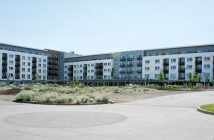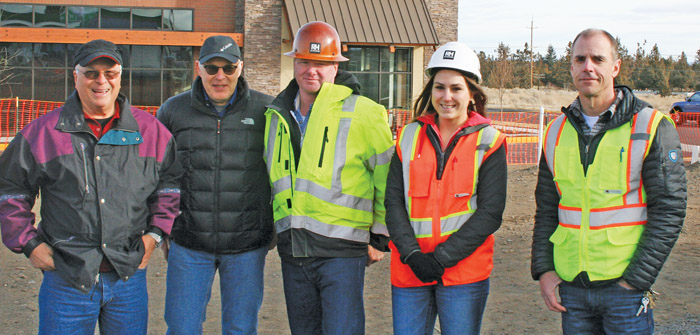A new study released by a national real estate analyst group finds that Bend’s housing market was the second most overvalued market in the U.S., behind only Atlantic City, New Jersey, out of 330 cities studied and that as a whole the Pacific Northwest is “precariously overvalued and likely to be the next shoe to drop.”
The housing valuation analysis, released by Massachusetts-based Global Insight, says the average home price in Bend runs about $290,500, which is overvalued by 49.5 percent, a slight decrease from first quarter 2007 when median home prices reached $319,900 and were overvalued by 65.7 percent, the study says.
In other words, the study claims a house in Awbrey Butte appraised at $500,000 is really worth only $250,000.
At least one local real estate observer says that is ridiculous.
Bill Robie, director of government affairs for the Central Oregon Association of Realtors, said the results of the study, and others like it that are released from time to time, are misleading because the methodology leaves out huge chunks of information that need to be considered when determining market prices – land permit fees, system development charges, the time it takes to build and the price of the land where the house will be built, to name a few.
“These kinds of statistics have come out before and they do not take into consideration the many local factors that contribute to Bend’s housing market prices,” Robie said.
Global Insight’s approach to determining the value of homes in Bend, and in every metro area covered by the study, considered the price of the house, interest rates, household incomes, population densities and any historical premiums or discounts exhibited over time by the city.
Global Insight examined those factors, accounting for 78 percent of all existing housing units in America and 93 percent of all related real estate value, to determine what housing prices should be, in this statistical sense, the study says.
Only eight metro areas, including Bend, were considered overvalued during first quarter 2008, down from a peak of 53 in 2006. Incidentally, California, Michigan and Florida continue to post the most severe losses, accounting for 45 of the 50 worst-performing metro areas, said Jeannine Cataldi, head of real estate services for Global Insight.
“The appearance of Northwestern states among the worst price performances vindicates our model performance, as we noted in previous reports that the Northwest seemed precariously overvalued,” Cataldi said.
A local news story that came out a few months ago highlighting a similar report used a similar index, but the problem with those studies is that the index used is inappropriate, Robie said.
“I don’t know the elements, or how they were put together, but I can’t imagine they apply directly to Central Oregon,” he said.
In fact, the methodology used by Global Insight does not apply directly to the Central Oregon market, Cataldi said. Rather, the results are meant to provide more of a general look at existing housing by examining housing density, income and mortgages in these 330 metro areas, among other factors.
“When you’re talking about the methodology of a study that looks at hundreds of metropolitan areas, getting into the specifics of each local area would take a long, long time,” Cataldi said. “Land-permit fees, the time it takes to build and other similar factors wouldn’t be taken into consideration because we are looking at existing home sales, not new construction.”
Bend traditionally has a lot of second home buyers and wealthy retirees in the market who can afford more expensive homes, which drives up the median price as well, and those factors are not figured into broad real estate studies either, Robie said.
And then there is the 800-pound gorilla in Bend’s real estate market – the city’s urban growth boundary, Robie said.
“Because we constrained the supply of available land, local prices can be very high,” Robie said. “There is very little land left to build on, which is why the city has been looking at doing an urban growth boundary expansion. From our perspective, in order to have any shot of mitigating a land price increase, we need to increase the UGB.”
For the past few months, the median price of homes for sale in Bend was above $300,000. It dipped down to $270,000 in April and then increased in May to $303,000, according to statistics released by the Central Oregon Association of Realtors.
In Redmond, the median sale price of a home increased from $225,000 in April to $245,000 in May. Sales in Redmond remained flat for most of the year, hovering somewhere between 30 to 40 sales per month and peaking at 50 in April.
In Crook County, median first quarter 2008 sale prices reached $207,000, up from $173,000 during the fourth quarter of 2007 and the number of sales declined from 45 to 20, respectively.
In related news, another report released on June 5 by the Mortgage Bankers Association, a Washington D.C.-based organization representing the real estate finance industry through the promotion of fair and ethical lending practice, finds that Oregon had the nation’s sixth lowest rate of delinquent loans and the sixth lowest foreclosure rate during first quarter 2008.
Oregonians have about 635,000 outstanding mortgages, according to the report, and about 3 percent of those loans (19,000) are 30 days or more past due. Close to 6,000 Oregon loans, just less than 1 percent of all advances, are in some state of foreclosure.
The rate of delinquent mortgages in Oregon reached its lowest point in 1982 at 6.2 percent, which remains the highest recorded rate in 29 years. During the dot-com and telecom implosion of 2000 through 2001, the delinquency rate reached 3.7 percent.
State foreclosures were 2.2 percent in 1985, the highest on record, compared to 1.3 percent in 2002 just after the technology sector bust.
People holding adjustable rate, subprime mortgages, which are typically awarded to individuals with low credit scores or negative credit histories, remain worse off today than other borrowers. The MBA report finds that of the 32,000 subprime adjustable rate mortgages outstanding in Oregon, about 14.5 percent of them are delinquent.
A summary of the report is available online at: http://www.mortgagebankers.org/NewsandMedia/PressCenter/62936.htm.




